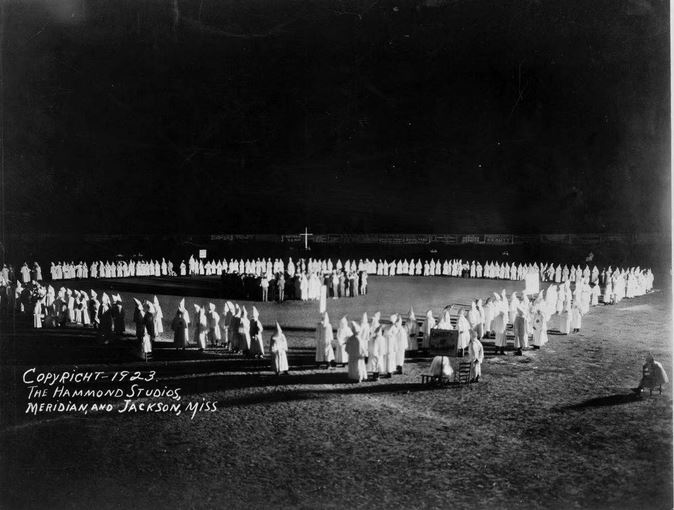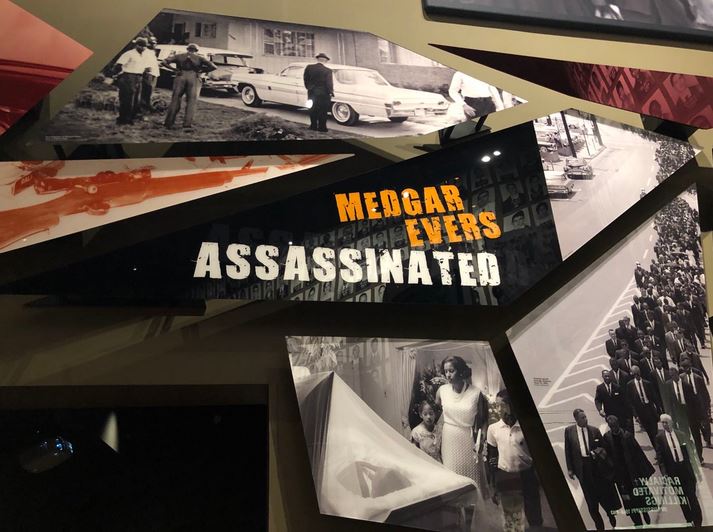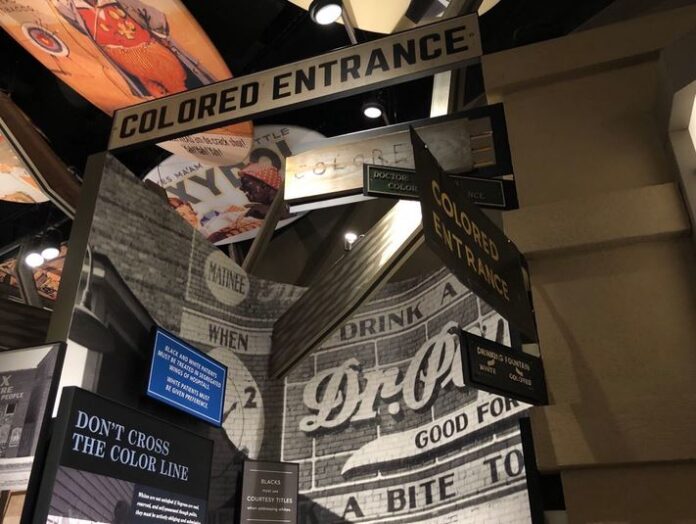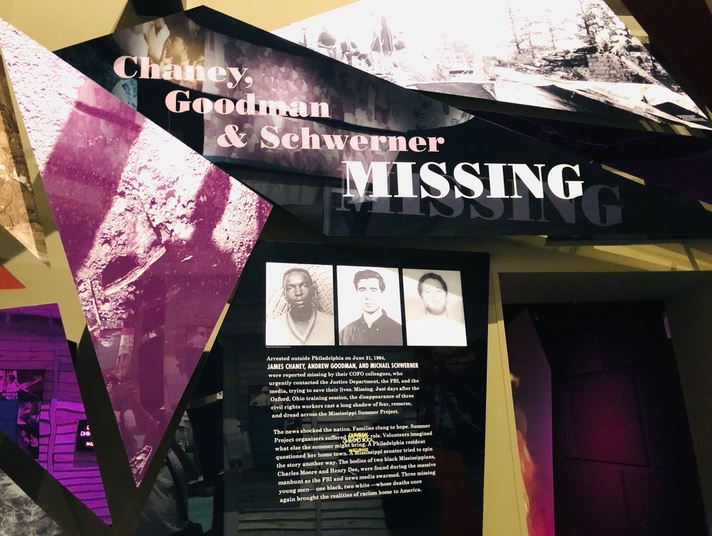By Raymond Douglas Chong, AsAmNews Staff Writer
Across the United States of America, the racial pandemic of anti-Asian hate bedevils our majestic land, from sea to shining sea.
Anti-Asian hate ravages and savages our lives. Asian Americans, as well as Pacific Islanders, are unfortunate scapegoats, in a divided America.
Since the arrival of our pioneers, we pursued the illusion of the American Dream. But we also endured the torment of American systemic racism.
Still, another people of color has also suffered inequalities and injustices, the African Americans. Since 1619, 402 years, 17 generations, they have sustained gross indignities. They were enslaved from 1619 to 1865, till the end of the American Civil War.
This story begins with my journey at the Mississippi Civil Rights Museum and continues with a look at the intersectionality between the Asian American and African American experience.
My Odyssey
During a summer weekend, I briefly visited Mississippi, the Magnolia State, in the Deep South. I curiously explored Jackson, the State Capitol. At the landmark State Capitol, subtle traces of Confederate States of America vaguely remain. Amidst their Mississippian society, Black Americans and White Americans still co-exist in distinct caste system.
Mississippi Civil Rights Museum
At a desolate downtown, I arrived at the somber Mississippi Civil Rights Museum. This is how the museum describes itself on its website.
The Mississippi Civil Rights Museum shares the stories of a Mississippi movement that changed the nation. The museum promotes a greater understanding of the Mississippi Civil Rights Movement and its impact by highlighting the strength and sacrifices of its peoples.
Visitors will witness the freedom struggle in eight interactive galleries that show the systematic oppression of Black Mississippians and their fight for equality that transformed the state and nation. Seven of the galleries encircle a central space called “This Little Light of Mine.” There, a dramatic sculpture glows brighter and the music of the movement swells as visitors gather.

While visiting the museum, thoughts raced through my mind about the similarities between the Asian American and Black American experience.
American Systemic Racism of African & Asian Americans
- White media satanized African Americans as Sambo and Jim Crow, as stereotyping. White media demonized Chinese Americans as heathens and celestials, as scapegoating midst Yellow Peril.
- African Americans suffered discrimination during the Jim Crow era (1877 to 1965). Chinese Americans suffered discrimination during the Chinese Exclusion era (1882 to 1965).
- African American endured lynchings in the Deep South. Chinese endured massacres in Los Angeles (1871), Rocky Springs, Wyoming (1885), Hells Canyon (1887).
- African American children were segregated at public schools in the Deep South. Chinese American and Japanese American children were segregated at public schools in San Francisco.
- African American cannot marry a White person. Chinese American cannot marry a White person.
- Whites stole lands from African Americans. Deemed as aliens, Chinese and Japanese immigrants were not allowed to own land.
- African Americans were called Colored as pejorative. Asian Americans were called Orientals as pejorative.
- Southern states denied voting rights for African Americans. Congress denied naturalization for Chinese Americans.
The systematic racism in America intersects and intertwines between African Americans and Asian Americans in parallel ways.
Across the American West, especially after 1882, White mobs killed and expelled Chinese Americans at Chinatowns and in the mines and farms. White mobs attacked Filipino Americans during riots in Watsonville, California (1930). Federal government unfairly interned the Nisei community during World War II (1942-1946). Asian Americans became the Model Minority, to assimilate and acculturate into mainstream America, as honorary Whites. In reality, Whites have used the Model Minority stereotype as a racial wedge between Asian Americans and African Americans.
FEDERAL LAWS
- First federal naturalization statute restricted the right of naturalization to “any alien, being a free white person.”
- Burlingame Treaty: Chinese citizens may emigrate freely to the United States “for purposes of curiosity, of trade, or as permanent residents.”
- Circuit Court in San Francisco rules that Chinese are ineligible for naturalization.
- Chinese Exclusion Act: Expressly forbids any court, state or federal, from granting citizenship to any Chinese person.
CALIFORNIA LAWS
- Shipmasters must furnish a $500 bond for all alien passengers landing in California.
- Capitation Tax required a $50 tax on the master or owner of a vessel for the landing of each passenger who was not eligible for state or federal citizenship by law.
- Chinese Exclusion Law prevented the further immigration of Chinese or Mongolians to this State.
- All Chinese people not employed in growing tea, rice, coffee or sugar must pay a $2.50 license fee each month.
- “Mongolian” women emigrating to California must prove that they are of good character.
- “The coming of Chinese persons into the State, whether subjects of the Chinese Empire or otherwise,” is prohibited.
SAN FRANCISCO ORDINANCES
- No Chinese may be employed by the government.
- Transporting goods on “yeo- ho” poles slung across the shoulders is prohibited.
- 1870- Gongs may not be rung at theatrical performances. No plays may be performed between midnight and daylight.
- Laundries with animal- drawn carts must pay a $2 fee, but laundries without carts must pay a $15 fee.
- Chinese prisoners must have their hair cut immediately after arriving at the county jail.
- Lotteries are forbidden. Building materials may not be imported from China.
- Chinese people, including citizens, must not live or work in San Francisco, except in “a portion set apart for the location of all the Chinese.”
- All Chinese people must be placed under quarantine and inoculated for Bubonic Plague.
Slavery
In slave wooden ships, about 13 million Africans were chained with iron shackles in dark and cramped cargo hold from Africa, across the Atlantic Ocean, to America, “the land of the free and the home of the brave.”
At plantations of the Deep South, White masters enslaved them. Their slaves raised cash crops: cotton, rice, corn, sugarcane, and tobacco. The slaves lived in small shacks with a dirt floor and little furniture. White overseers cruelly tortured them. White masters and overseers raped the African women, that resulted with children born out of wedlock.
After end of the American Civil War in 1865, Congress abolished slavery. But White supremacy and racial superiority remain an ugly blight in the Deep South. Media negatively stereotyped African Americans as Sambo, Jim Crow, The Savage, The Mammy, Aunt Jemimah, Sapphire, and Jezebelle. White society cruelly segregated African Americans in ghettos, to menial jobs, and “separate but equal” facilities, in colored lines.
Jim Crow Laws
After 1865, lawmakers enacted Jim Crow laws to suppress civil rights of African Americans, including the right to vote. Jim Crow laws segregated and disenfranchised African Americans to preserve the racial order as an institution. The laws mandated segregation of schools, parks, libraries, drinking fountains, restrooms, buses, trains, and restaurants. “WHITES ONLY” and “COLORED” regulatory signs were everywhere. Plessy v. Ferguson was a landmark 1896 U.S. Supreme Court decision that upheld the constitutionality of racial segregation under the “separate but equal” doctrine.
The official Jim Crow era (1877 – 1964) began when federal troops withdrew from the Deep South.
Bringing History Home highlighted the Jim Crow laws in Mississippi from 1865 to 1958:
- Declared a felony for any freedman, free Negro, or mulatto to intermarry with a White person.
- Unlawful for any freedman, Negro, or mulatto to ride in any first-class passenger cars used by White persons.
- Negroes declared incompetent to serve as juror.
- Prohibited teaching White and Black children in the same school.
- New buildings were to provide separate rooms for the sexes and the races, if deemed proper by the board.
- Prohibited marriage of a White person with a Negro or mulatto or person who has one-eight or more of Negro blood.
- Separate schools to be maintained for White and Black children.
- Separate districts established for the schools of White and Black children.
- Streetcars were to provide equal but separate accommodations for White and colored passengers.
- Railroad commission to provide separate waiting rooms for White and Black passengers.
- Required schools to be racially segregated, and the creation of separate districts to provide school facilities for the greatest number of pupils of both races.
- Miscegenation declared a felony.
- Instituted poll tax requirement.
- Marriage between White and Negro or Asian banned.
- Segregated facilities at state charity hospital and separate entrances at all state hospitals.
- Separate schools to be maintained.
- Public carriers to be segregated.
- Firms and corporations authorized to choose their clientele and the right to refuse service to any person.
- Authorized governor to close parks to prevent desegregation.
During the Jim Crow era, racists applied lynchings as a White supremacy tool to control and terrorize African Americans into submission. They accused them of sexual assault, murders, and other crimes. The White mobs, in collusion with police and sheriff officers, tortured, lynched, and burned them. Tuskegee Institute reported that White mobs lynched 3,446 African Americans, between 1881 and 1968.

Civil Rights Movement
After the end of American Civil War, in 1865, the Ku Klux Klan, as an American White supremacist terrorist hate group, terrorized African Americans. Their harassment and violence against lawmakers ended Reconstruction and reestablished White supremacy, in 1877.
The Civil Rights Movement (1954 to 1968) was a mass protest movement against racial segregation and discrimination in the Deep South. Brown v. Board of Education of Topeka was a landmark 1954 Supreme Court case in which the justices unanimously ruled that racial segregation of children in public schools was unconstitutional.
During the Civil Rights Movement, Ku Klux Klan bombed African American schools and churches and killed and assassinated African American and White activists in the Deep South.
Amid the Civil Rights Movement, Mississippi was in dark state of siege. The Freedom Rides; James Meredith and the 1962 integration of Ole Miss; the 1963 Woolworth’s sit-in; l 1964 Freedom Summer; Fannie Lou Hamer; the Mississippi Freedom Democratic Party; Anne Moody and Coming of Age in Mississippi; the Meredith March against Fear.
Martyrs of the Civil Rights Movement in Mississippi
These are martyrs of the Civil Rights Movement at Mississippi, who are deeply etched in American history:
Emmett Louis Till
Emmett Louis Till was an African American teenager from Chicago who was visiting Mississippi during summer vacation. Till was accused of offending a Carolyn Bryan, White woman in her family’s Bryant’s Grocery and Meat Market. On August 28, 1955, in Drew, Roy Bryant, her husband and J.W. Milam, his half-brother abducted Till. They beat and mutilated him, and then shot him in the head and lynched him, with barbed wire. They dumped his body in the Tallahatchie River.
Till’s funeral was held at Roberts Temple Church of God in Chicago. Mamie Till Bradley, his mother, allowed an open casket to show his bloated and mutilated body. The scene shocked the world about systemic racism and its carnage in America.
In September 1955, an all-White and all-male jury found Bryant and Milam not guilty of Till’s kidnapping and murder. Free from double jeopardy, they admitted their kidnapping and killing of Till to Look magazine.
I think everybody needed to know what had happened to Emmett Till.
Mamie Till Bradley, mother of Emmett Louis Till

Medgar Wiley Evers
Medgar Wiley Evers was an American civil rights activist in Mississippi, the Mississippi’s field secretary for the National Association for the Advancement of Colored People. He organized boycotts. He worked to end segregation at the University of Mississippi, end segregation of public facilities, and to enforce voting rights. On June 12, 1963, Evers was assassinated at his home in Jackson with a rifle.
Byron De La Beckwith, a fertilizer salesman and Ku Klux Klan member, was prosecuted. But two all-White and all-male juries deadlocked in a hung jury. In 1994, a racially diverse jury convicted Beckwith for Evers’ murder with life sentence in prison.
Freedom has never been free… I love my children and I love my wife with all my heart. And I would die, die gladly, if that would make a better life for them.
Medgar Wiley Evers, civil rights activist
James Chaney, Andrew Goodman & Michael Schwerner
James Chaney from Meridian, Mississippi, and Andrew Goodman and Michael Schwerner from New York City, were Civil Rights Movement workers during Freedom Summer. In Philadelphia, on June 21, 1964, Ku Klux Klan abducted them. They beat, castrated, and shot them and then buried three at a farm pond.
The cruel murders sparked national outrage and a wide federal investigation. Federal prosecutors charged eighteen Klansmen with civil rights violations. Seven were convicted with minor sentences. In 2005, Edgar Ray Killen, was convicted of three counts of manslaughter .
The road to freedom must be uphill, even if it is arduous and frustrating.
Andrew Goodman, Civil Rights Movement worker
Vernon Ferdinand Dahmer, Sr.
Vernon Ferdinand Dahmer, Sr., was a businessman and farmer. As a leader with the Civil Rights Movement, Dahmer was president of the NAACP chapter in Hattiesburg. White Knights of the Ku Klux Klan murdered Dahmer for his voting registration work. On January 10, 1966, they firebombed Dahmer’s home. He died of smoke inhalation and severe burns. The fire destroyed his home, grocery store, and car.
Federal prosecutors filed arson and murder charges against 14 Klansmen. One pleaded guilty to arson. Three more were convicted of murder and were sentenced to life in prison. In 1998, Sam Bowers, Ku Klux Klan Imperial Wizard, the ringleader, was convicted with life sentence in prison.
If you do not vote, you do not count.
Vernon Ferdinand Dahmer, Sr., Civil Rights Movement leader
Congress passed the Civil Rights Act of 1964 and the Voting Rights Act of 1965. They were major legislative victories for the Civil Rights Movement. Civil Rights Act outlawed discrimination based on race, color, religion, sex, national origin. Voting Rights Act prohibited racial discrimination in voting.
South Asians and the Civil Rights Movement
Men from Bengal, mostly Muslims, and Punjab, mostly Sikhs, of British India, were the early South Asian pioneers. They were not allowed to bring their women. Anti-miscegenation laws by states of America prohibited South Asian men to White women. Alien land laws by states also prohibited ownership of lands by South Asians.
Since 1790, Congress allowed citizenship to only Whites. South Asians had no right to naturalization. Asiatic Exclusion League, a White supremacy organization, sought to the exclude South Asian, Chinese, Japanese and Korean immigrants, to protect the white man’s country. Congress enacted Immigration Act of 1917 with the Asiatic Barred Zone, that excluded South Asians. After Congress enacted Immigration and Naturalization Act of 1965, many South Asians immigrated to America.
In solidarity with African Americans, South Asians supported their Civil Rights Movement in America, as shared struggles. At British India, their homeland, they faced British inequalities and injustices. Mohandas Karamchand Gandhi, nationalist, led nonviolent civil disobedience in the struggle for independence of India, until it was achieved in 1947. African American newspapers closely watched Gandhi’s movement. Dr. Martin Luther King was influenced by Gandhi in practicing nonviolent civil disobedience for the American civil rights movement.
Ram Manohar Lohia, Indian freedom fighter and parliamentarian, fought Jim Crow laws at Jackson, Mississippi. Lohia was jailed after he was refused dinner service, twice, at a segregated Morrison’s Cafeteria in downtown.
On May 28, 1964, more than a decade after he had traveled through the American encouraging African Americans to embrace Gandhian civil disobedience, Rammanohar Lohia, now a prominent member of the Indian Parliament, himself offered satyagraha in Jackson, Mississippi. Lohia relished the opportunity to be arrested for confronting Jim Crow. He had been turned away from Morrison cafeteria the night before his arrest and chose to return in order to court arrest. In dressed in sparkling-white clothes that distinguished him as Indian, Lohia attempted to enter the restaurant for the second time…The police arrested him, put him in a paddy wagon, and drove him away from the restaurant before releasing him. The State Department promptly sent a formal apology to the Indian ambassador. Decrying his treatment as “tyranny against the United States Constitution,” Lohia told reporters that both the State Department and the Indian Embassy “may go to hell.” Segregation was a moral issue, he stressed, not a political one. When told that the American ambassador to the United Nations…would offer his apologies, Lohia replied that Stevenson should apologize to the State of Liberty.
Nico Slate, Colored Cosmopolitanism
The Civil Rights Movement by African Americans sparked our Asian American Movement, during the Vietnam War. Asian Americans inspired civic engagement by political representation at legislatures. This Movement established Asian American ethnic studies at colleges and universities across USA.
Asian Americans and Pacific Islanders should collaborate with African Americans, and other people of color, to end systemic racism in America.
Reflection
Anti-Asian hate still rages across the United States of America. But I was utterly stunned by sheer scope and scale of systemic racism against the African Americans in Mississippi. I agonize the dark scars of their inequalities and injustice in a caste system.
Malcom X, Muslim minister and human rights activists
The Asian American community must duly recognize the struggles and sacrifices of the protestors and martyrs of the Civil Rights Movement. For the legacy of Emmett Louis Till, Medgar Wiley Evers, James Chaney, Andrew Goodman, Michael Schwerner, and Vernon Ferdinand Dahmer, Sr.
Asian Americans must form a hued coalition with other people of color for civic engagement. We must end the despicable American plague of systemic racism in White supremacy and racial superiority across our majestic land, from sea to shining sea. United and unified as brothers and sisters, we Americans, people of color, can aspire for a true America, in equality and in justice. In rapport, we shall achieve the American Dream, for our better tomorrow.
AsAmNews has Asian America in its heart. We’re an all-volunteer effort of dedicated staff and interns. Check out our new Instagram account. Go to our Twitter feed and Facebook page for more content. Please consider interning, joining our staff, or submitting a story or making a contribution.




Why do the newly arrived Asians do not want to know the truth? Or is it because they don’t want to deal with it? They can try to say it doesn’t exist but just look at what is happening today.
Raymond , great article . We are inching toward a better society but you must keep pointing out these differences toward all mankind so that we can keep making changing to correct these social injustices.
Thank you for this article. Excellent! Hope a lot of people will read it and realize how we all need to come together – all colors – to make a difference against the established racist dogma and horrors of white supremacist thinking which rampantly continues today. It is really also up to our white brothers and sisters to talk with their counterparts, to infiltrate and have conversations with their white corporations and communities to shift the prejudice and fear to acceptance and celebration.